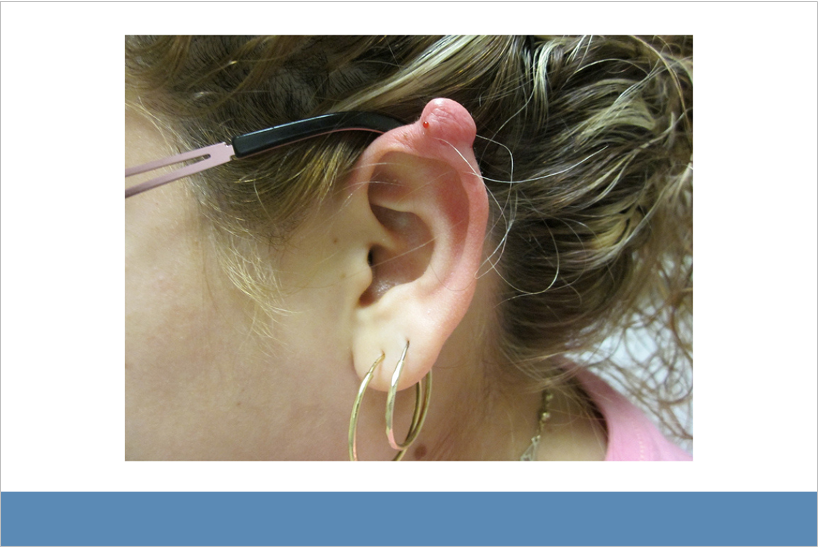Dr. Donald Glass shared information about advances in keloid treatment. Keloids are raised scars that grow invasively beyond the boundaries of the original wounds. Keloids are distinct from hypertrophic scars, which remain confined to the boundaries of the original wounds and may regress spontaneously.
First, Glass provided an overview of keloid epidemiology, pathophysiology, clinical presentation, and diagnosis. Keloids have increased incidence in people of color; there is no known gender bias. Keloids are commonly found on the chest, upper back, shoulders, and earlobes and can occur spontaneously or be triggered by surgery, piercings, vaccinations, cuts, and acne or folliculitis.
Keloids are associated with comorbidities, including hypertension, fibroids, atherosclerosis, coronary stent restenosis, and atopic dermatitis. They are caused by an exaggerated response to wound healing and can lead to significant cosmetic defects, pain, and itching. Keloid tissue has increased concentrations of macrophages, T-lymphocytes, and mast cells. Keloids are often diagnosed clinically and can be confirmed via punch biopsy. The differential diagnosis for keloids includes dermatofibrosarcoma protuberans, lobomycosis, Rosai-Dorfman disease, neurofibroma, and dermatofibroma.

Keloids severely affect quality of life to a degree similar to psoriasis.
Second, Glass discussed the numerous treatment options for keloids. Treatment decisions depend on factors such as location, single versus multiple sites, initial occurrence versus recurrence, family history, and symptoms. First-line therapies include intralesional steroid injections (namely triamcinolone), silicone sheets, and compression. Intralesional steroids increase collagenase and decrease collagen and inflammation, although some keloids are steroid resistant. Silicone sheets are FDA approved for keloids but work better for hypertrophic scars. Compression therapy is used primarily for keloids on the earlobe, but it also can be used for keloids in other locations.
If first-line therapies are ineffective, other treatment options include intralesional 5-fluorouracil injections, laser therapy, radiation therapy, and cryotherapy. Intralesional 5-fluorouracil is more effective when combined with corticosteroid injections. Laser therapy carries the potential for hyperpigmentation, hypopigmentation, and scarring. It requires multiple treatments for good outcomes. Radiation therapy is typically combined with surgical excision. Intralesional cryotherapy has a decreased risk for dyspigmentation and is more effective with fewer sessions versus spray cryotherapy.
To conclude, Glass highlighted ongoing clinical trials for systemic treatments of keloids, including dupilumab and ritlecitinib. Systemic treatments can be considered for patients with severe or symptomatic keloids and to prevent keloid recurrence.
Mark January 28-31, 2026 on your calendar for the 2026 Annual DF Clinical Symposium.

